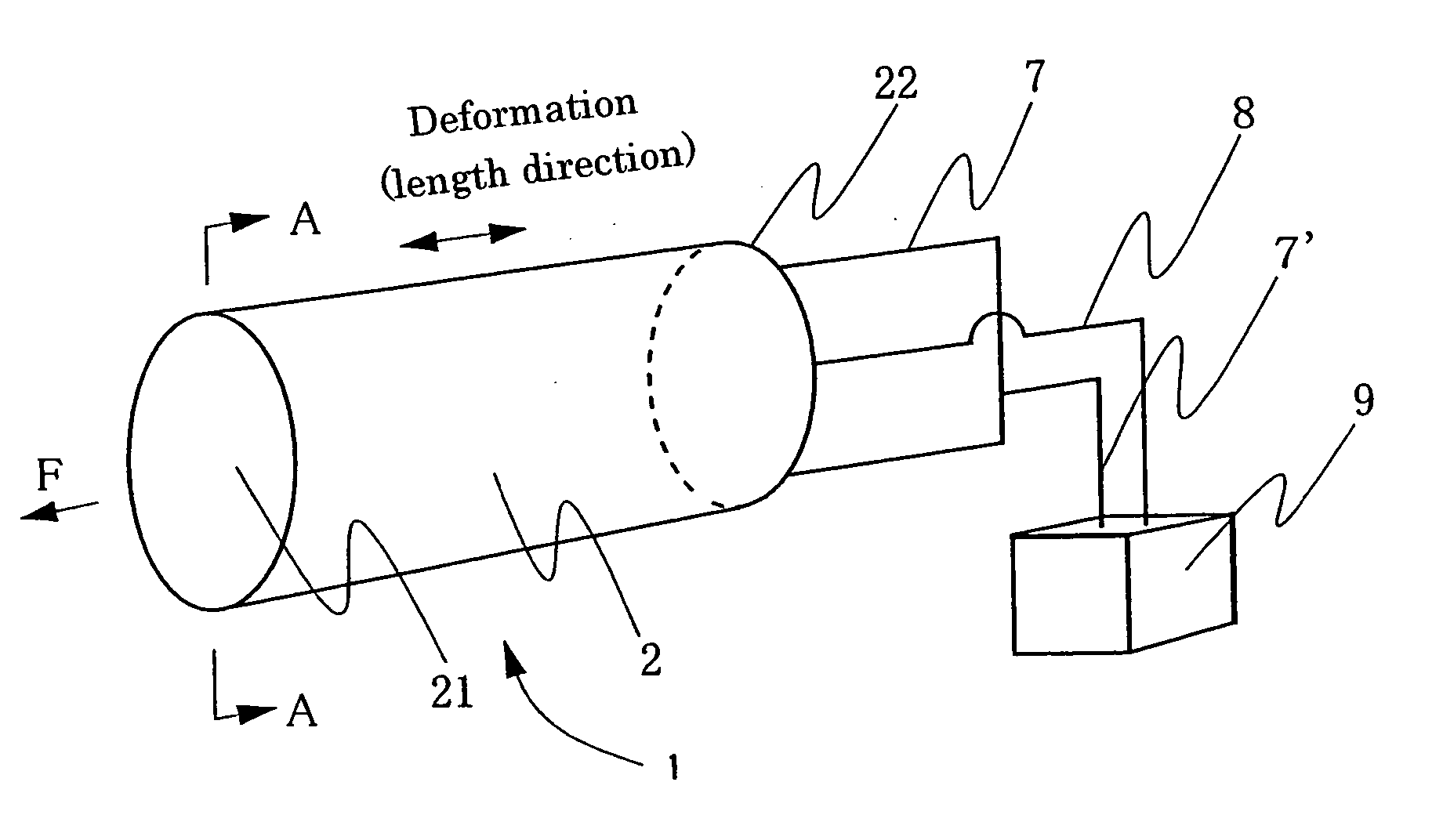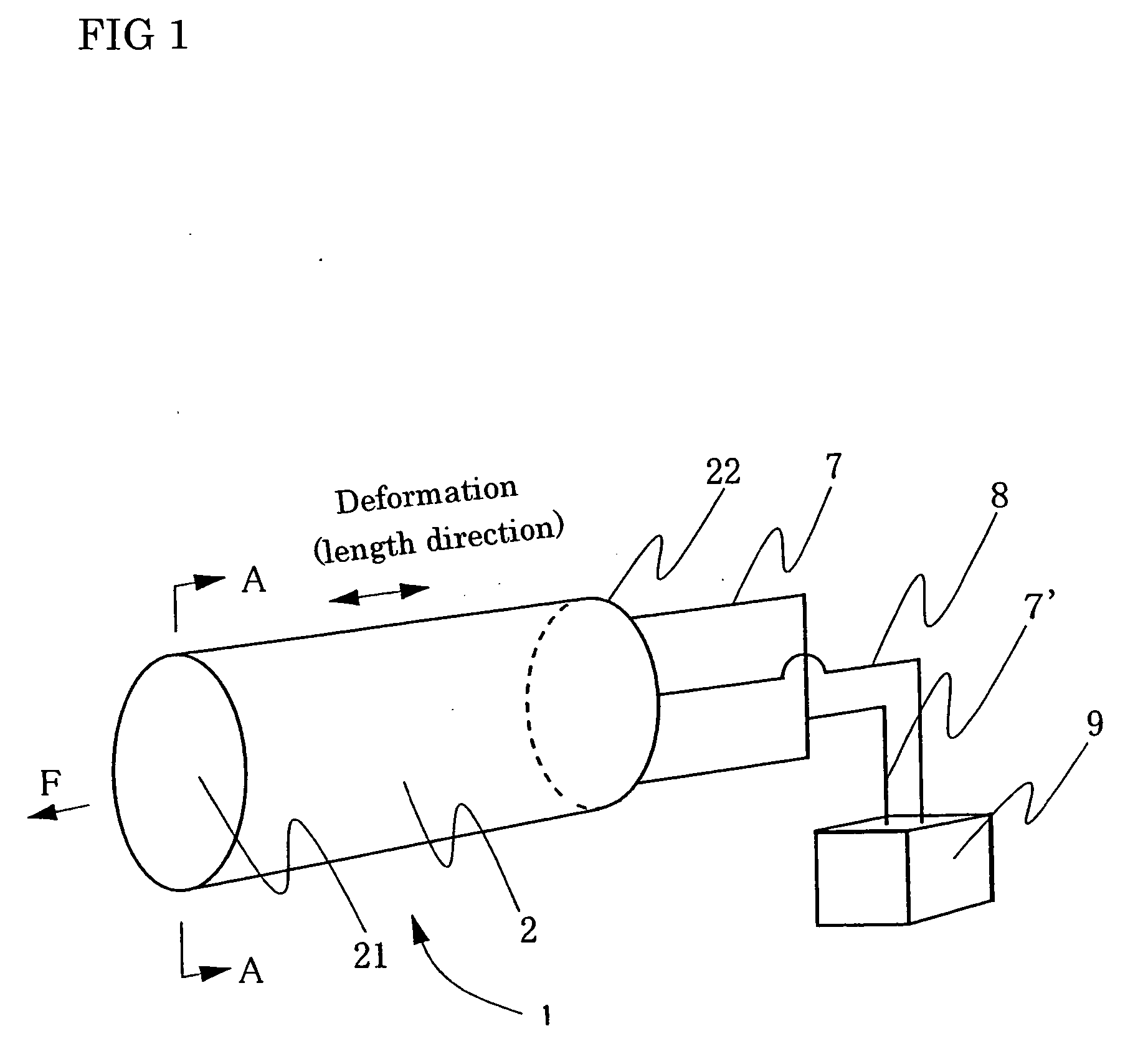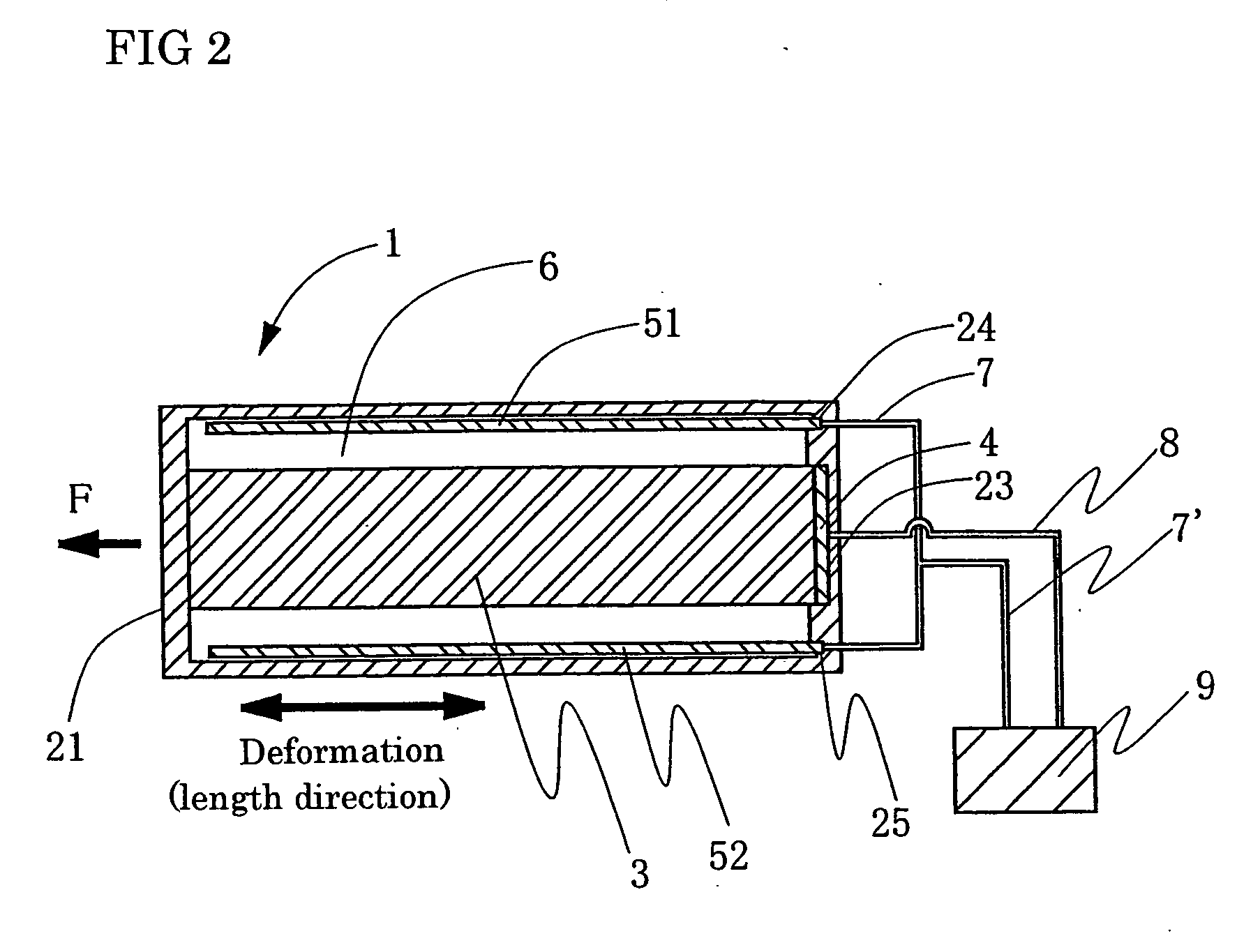Process for producing conductive polymer
a technology of conductive polymers and polymers, which is applied in the direction of non-metal conductors, ligaments, prostheses, etc., can solve the problems of difficult to obtain conductive polymers with well balanced electrochemical strain and stress, and the electrochemical strain per redox cycle is more than 3%, and the deformation or strain per redox cycle is not satisfactory
- Summary
- Abstract
- Description
- Claims
- Application Information
AI Technical Summary
Benefits of technology
Problems solved by technology
Method used
Image
Examples
example 1
[0118] Electrolyte was prepared by dissolving monomer and salt of dopant ion stated in table 1 into a solvent stated in table 1 by known stirring method thereby preparing 0.25 mol / l monomer of conductive polymers, making concentration of dopant salt that of table 1.
[0119] For this electrolyte, an ITO glass electrode was used as the working electrode and a Pt electrode was used as the counter electrode and electrochemical polymerization was conducted by a constant current method in which polymerization current density is the value shown in table 1. By this electrochemical polymerization, a conductive polymer film of Example 1 having conductivity and a film thickness shown in table 1 was obtained.
examples 2 to 40 and examples 44 and 45
[0120] Conductive polymer films of Examples 2 to 40 and Examples 44 and 45 were obtained by the same method of Example 1 except that the present Example employed the condition of electrochemical polymerization stated in tables 1 to 6. In addition, in Example 15, regarding monomer of conductive polymers, the mixture ratio of pyrrole and 3-methylthiophene was 1 / 1 (mol / mol).
example 41
[0121] A conductive polymer film of Example 41 was obtained by the same method of Example 1 except that the present Example employed the condition of electrochemical polymerization stated in table 5 and that the present Example employed a Ti electrode which is a metal electrode as the working electrode. In addition, as the metal electrode of the present application, a commercially available metal electrode was used.
PUM
| Property | Measurement | Unit |
|---|---|---|
| temperature | aaaaa | aaaaa |
| temperature | aaaaa | aaaaa |
| current density | aaaaa | aaaaa |
Abstract
Description
Claims
Application Information
 Login to View More
Login to View More - R&D
- Intellectual Property
- Life Sciences
- Materials
- Tech Scout
- Unparalleled Data Quality
- Higher Quality Content
- 60% Fewer Hallucinations
Browse by: Latest US Patents, China's latest patents, Technical Efficacy Thesaurus, Application Domain, Technology Topic, Popular Technical Reports.
© 2025 PatSnap. All rights reserved.Legal|Privacy policy|Modern Slavery Act Transparency Statement|Sitemap|About US| Contact US: help@patsnap.com



